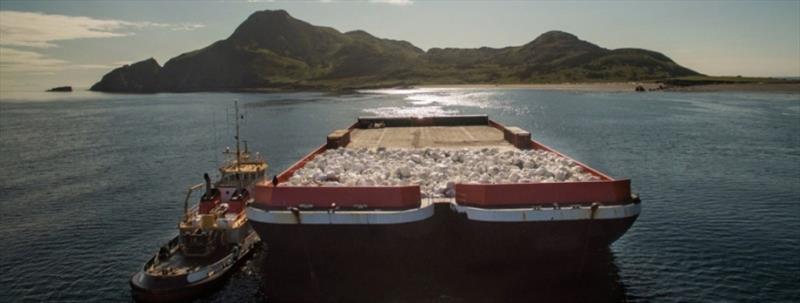
Innovation at work: The latest in Marine Debris Removal Projects
by NOAA Fisheries 12 Jan 2018 20:03 PST

Innovative removal strategies are sometimes necessary to effectively remove debris © Gulf of Alaska Keeper
Marine debris is a pervasive pollution problem that impacts all corners of the globe. Sometimes, debris ends up in places that require innovative thinking in order to remove. Check out some of these projects that implemented innovative removal strategies.
Click on the project title to find more project information and to read about their techniques and lessons learned.
Abandoned and Derelict Vessel in the Dog River Watershed
Region: Gulf of Mexico
This project, led by Dauphin Island Sea Lab, evaluated sites with abandoned and derelict vessels for removal using a barge and crane and determined which vessels to remove using an innovative evaluation tool. Vessel removals were followed with restoration activities and public outreach.
Baynanza Bulky Marine Debris Prevention and Removal in Miami-Dade County
Region: Florida and the Caribbean
This project, led by the Miami-Dade County Department of Environmental Resource Management, worked to expand the scope of the area's annual "Baynanza" celebration and facilitate the removal of large, bulky debris items.
Derelict Crab Trap Removal in Southern New Jersey Coastal Bays
Region: Mid-Atlantic
This project, led by Stockton University, worked directly with commercial crabbers to remove derelict crab traps outside of their regular fishing season, expanding on a previous project which identified areas with high concentrations of derelict crab traps.
Derelict Fishing Gear Removal Project in the Quinault Indian Nation Special Management Area
Region: Pacific Northwest
This project worked to remove derelict crab pots from 155 square miles of habitat within the Quinault Indian Nation Special Management Area using a line cutting device and other techniques, develop a reporting and recovery program for derelict gear, and conduct outreach and education on reducing derelict gear.
Derelict Fishing Net Removal in the Puget Sound
Region: Pacific Northwest
This project, led by the Washington Department of Fish and Wildlife, developed Derelict Fishing Gear Removal Guidelines to provide a framework for the safe and environmentally-sensitive removal and proper disposal of derelict fishing gear.
Helicopter and Barge Removal in the Gulf of Alaska
Region: Alaska
This project, led by the Gulf of Alaska Keeper, removed marine debris from remote locations of Alaska by airlifting debris via helicopter to a barge, which then transported the debris for disposal.
Northwestern Hawaiian Islands Debris Removal
Region: Pacific Islands
This project, led by NOAA, surveys and removes debris from the remote Northwestern Hawaiian Islands (NWHI) using Manta Tow and snorkel surveying methods, with access to the area only possible via large ships.
Port of San Diego Marine Debris Removal Project
Region: California
This project, led by the Port of San Diego, utilized a combination of side-scan sonar technology, divers, and outreach activities to identify, remove, and prevent submerged debris in the formerly free A-8 anchorage of San Diego Bay.